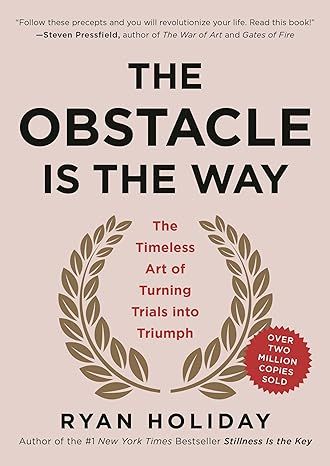The Obstacle Is the Way: The Timeless Art of Turning Trials into Triumph
4.6
-
28,125 ratings
#1 Wall Street Journal Bestseller
The Obstacle is the Way has become a cult classic, beloved by men and women around the world who apply its wisdom to become more successful at whatever they do.
Its many fans include a former governor and movie star (Arnold Schwarzenegger), a hip hop icon (LL Cool J), an Irish tennis pro (James McGee), an NBC sportscaster (Michele Tafoya), and the coaches and players of winning teams like the New England Patriots, Seattle Seahawks, Chicago Cubs, and University of Texas men’s basketball team.
The book draws its inspiration from stoicism, the ancient Greek philosophy of enduring pain or adversity with perseverance and resilience. Stoics focus on the things they can control, let go of everything else, and turn every new obstacle into an opportunity to get better, stronger, tougher. As Marcus Aurelius put it nearly 2000 years ago: “The impediment to action advances action. What stands in the way becomes the way.”
Ryan Holiday shows us how some of the most successful people in history—from John D. Rockefeller to Amelia Earhart to Ulysses S. Grant to Steve Jobs—have applied stoicism to overcome difficult or even impossible situations. Their embrace of these principles ultimately mattered more than their natural intelligence, talents, or luck.
If you’re feeling frustrated, demoralized, or stuck in a rut, this book can help you turn your problems into your biggest advantages. And along the way it will inspire you with dozens of true stories of the greats from every age and era.
Kindle
$4.99
Available instantly
Audiobook
$0.00
with membership trial
Hardcover
$14.89
Paperback
$16.79
Ships from
Amazon.com
Payment
Secure transaction
ISBN-10
1591846358
ISBN-13
978-1591846352
Print length
224 pages
Language
English
Publisher
Portfolio
Publication date
April 30, 2014
Dimensions
5.25 x 0.87 x 7.27 inches
Item weight
2.31 pounds
Popular Highlights in this book
The impediment to action advances action. What stands in the way becomes the way.
Highlighted by 28,032 Kindle readers
Where the head goes, the body follows. Perception precedes action. Right action follows the right perspective.
Highlighted by 24,250 Kindle readers
Focusing exclusively on what is in our power magnifies and enhances our power.
Highlighted by 24,223 Kindle readers
Product details
ASIN :
B00G3L1B8K
File size :
2245 KB
Text-to-speech :
Enabled
Screen reader :
Supported
Enhanced typesetting :
Enabled
X-Ray :
Enabled
Word wise :
Enabled
Editorial Reviews
“The book on stoicism that’s taking the NFL by storm.” –Sports Illustrated
"The best one I've read. Ryan Holiday is brilliant. If I had read The Obstacle Is the Way sooner, a few things might have been different."
- Rory McIlroy, 2x PGA Champion
“Follow these precepts and you will revolutionize your life. Read this book!” —Steven Pressfield, author of The War of Art and Gates of Fire
“A book for the bedside of every future—and current—leader in the world.” —Robert Greene, author of The 48 Laws of Power and Mastery
“First came Marcus Aurelius, then Frederick the Great . . . and now there’s you. This surprising book shows you how to craft a life of wonder by embracing obstacles and challenges.” —Chris Guillebeau, author of The $100 Startup
"A very, very good book with lots of examples about people who had to overcome great obstacles to have success." —Nick Saban, head football coach at the University of Alabama
“In this tight, engaging book, Ryan Holiday shines a bright, powerful light on the path to living and leading well. Read it, learn from it, and get cracking!” —Nancy F. Koehn, historian and leadership expert, Harvard Business School
“My life has been beset with obstacles. It takes practice (and pain) to surmount them and achieve success. Ryan’s book is a how-to guide for just that.” —James Altucher, investor and author of Choose Yourself
“Ryan Holiday has written a brilliant and engaging book, well beyond his years. . . . It is invaluable.” —Honorable Frederic Block, Judge, U.S. District Court
“Even though I was familiar with the basis for this book — the ancient philosophy of stoicism: overcoming obstacles through the practice of wisdom, courage, self-control, and mindfulness — it felt like a revelation when I read it.” —Allison K. Hill, Los Angeles Daily News
“Tremendous! Go buy every book that Ryan Holiday has written." —John Tesh, host of national radio show Intelligence for Your Life
Read more
Sample
PREFACE
In the year 170, at night in his tent on the front lines of the war in Germania, Marcus Aurelius, the emperor of the Roman Empire, sat down to write. Or perhaps it was before dawn at the palace in Rome. Or he stole a few seconds to himself during the games, ignoring the carnage on the floor of the Colosseum below. The exact location is not important. What matters is that this man, known today as the last of the Five Good Emperors, sat down to write.
Not to an audience or for publication but to himself, for himself. And what he wrote is undoubtedly one of history’s most effective formulas for overcoming every negative situation we may encounter in life. A formula for thriving not just in spite of whatever happens but because of it.
At that moment, he wrote only a paragraph. Only a little of it was original. Almost every thought could, in some form or another, be found in the writings of his mentors and idols. But in a scant eighty-five words Marcus Aurelius so clearly defined and articulated a timeless idea that he eclipses the great names of those who came before him: Chrysippus, Zeno, Cleanthes, Ariston, Apollonius, Junius Rusticus, Epictetus, Seneca, Musonius Rufus.
It is more than enough for us.
Our actions may be impeded . . . but there can be no impeding our intentions or dispositions. Because we can accommodate and adapt. The mind adapts and converts to its own purposes the obstacle to our acting.
And then he concluded with powerful words destined for maxim.
The impediment to action advances action.
What stands in the way becomes the way.
In Marcus’s words is the secret to an art known as turning obstacles upside down. To act with “a reverse clause,” so there is always a way out or another route to get to where you need to go. So that setbacks or problems are always expected and never permanent. Making certain that what impedes us can empower us.
Coming from this particular man, these were not idle words. In his own reign of some nineteen years, he would experience nearly constant war, a horrific plague, possible infidelity, an attempt at the throne by one of his closest allies, repeated and arduous travel across the empire—from Asia Minor to Syria, Egypt, Greece, and Austria—a rapidly depleting treasury, an incompetent and greedy stepbrother as co-emperor, and on and on and on.
And from what we know, he truly saw each and every one of these obstacles as an opportunity to practice some virtue: patience, courage, humility, resourcefulness, reason, justice, and creativity. The power he held never seemed to go to his head—neither did the stress or burden. He rarely rose to excess or anger, and never to hatred or bitterness. As Matthew Arnold, the essayist, remarked in 1863, in Marcus we find a man who held the highest and most powerful station in the world—and the universal verdict of the people around him was that he proved himself worthy of it.
It turns out that the wisdom of that short passage from Marcus Aurelius can be found in others as well, men and women who followed it like he did. In fact, it is a remarkable constant down through the ages.
One can trace the thread from those days in the decline and fall of the Roman Empire to the creative outpouring of the Renaissance to the breakthroughs of the Enlightenment. It’s seen starkly in the pioneer spirit of the American West, the perseverance of the Union cause during the Civil War, and in the bustle of the Industrial Revolution. It appeared again in the bravery of the leaders of the civil rights movement and stood tall in the prison camps of Vietnam. And today it surges in the DNA of the entrepreneurs of Silicon Valley.
This philosophic approach is the driving force of self-made men and the succor to those in positions with great responsibility or great trouble. On the battlefield or in the boardroom, across oceans and many centuries, members of every group, gender, class, cause, and business have had to confront obstacles and struggle to overcome them—learning to turn those obstacles upside down.
That struggle is the one constant in all of their lives. Knowingly or not, each individual was a part of an ancient tradition, employing it to navigate the timeless terrain of opportunities and difficulties, trial and triumph.
We are the rightful heirs to this tradition. It’s our birthright. Whatever we face, we have a choice: Will we be blocked by obstacles, or will we advance through and over them?
We might not be emperors, but the world is still constantly testing us. It asks: Are you worthy? Can you get past the things that inevitably fall in your way? Will you stand up and show us what you’re made of?
Plenty of people have answered this question in the affirmative. And a rarer breed still has shown that they not only have what it takes, but they thrive and rally at every such challenge. That the challenge makes them better than if they’d never faced the adversity at all.
Now it’s your turn to see if you’re one of them, if you’ll join their company.
This book will show you the way.
INTRODUCTION
This thing in front of you. This issue. This obstacle—this frustrating, unfortunate, problematic, unexpected problem preventing you from doing what you want to do. That thing you dread or secretly hope will never happen. What if it wasn’t so bad?
What if embedded inside it or inherent in it were certain benefits—benefits only for you? What would you do? What do you think most people would do?
Probably what they’ve always done, and what you are doing right now: nothing.
Let’s be honest: Most of us are paralyzed. Whatever our individual goals, most of us sit frozen before the many obstacles that lie ahead of us.
We wish it weren’t true, but it is.
What blocks us is clear. Systemic: decaying institutions, rising unemployment, skyrocketing costs of education, and technological disruption. Individual: too short, too old, too scared, too poor, too stressed, no access, no backers, no confidence. How skilled we are at cataloging what holds us back!
Every obstacle is unique to each of us. But the responses they elicit are the same: Fear. Frustration. Confusion. Helplessness. Depression. Anger.
You know what you want to do but it feels like some invisible enemy has you boxed in, holding you down with pillows. You try to get somewhere, but something invariably blocks the path, following and thwarting each move you make. You have just enough freedom to feel like you can move; just enough to feel like it’s your fault when you can’t seem to follow through or build momentum.
We’re dissatisfied with our jobs, our relationships, our place in the world. We’re trying to get somewhere, but something stands in the way.
So we do nothing.
We blame our bosses, the economy, our politicians, other people, or we write ourselves off as failures or our goals as impossible. When really only one thing is at fault: our attitude and approach.
There have been countless lessons (and books) about achieving success, but no one ever taught us how to overcome failure, how to think about obstacles, how to treat and triumph over them, and so we are stuck. Beset on all sides, many of us are disoriented, reactive, and torn. We have no idea what to do.
On the other hand, not everyone is paralyzed. We watch in awe as some seem to turn those very obstacles, which stymie us, into launching pads for themselves. How do they do that? What’s the secret?
Even more perplexing, earlier generations faced worse problems with fewer safety nets and fewer tools. They dealt with the same obstacles we have today plus the ones they worked so hard to try to eliminate for their children and others. And yet . . . we’re still stuck.
What do these figures have that we lack? What are we missing? It’s simple: a method and a framework for understanding, appreciating, and acting upon the obstacles life throws at us.
John D. Rockefeller had it—for him it was cool headedness and self-discipline. Demosthenes, the great Athenian orator, had it—for him it was a relentless drive to improve himself through action and practice. Abraham Lincoln had it—for him it was humility, endurance, and compassionate will.
There are other names you’ll see again and again in this book: Ulysses S. Grant. Thomas Edison. Margaret Thatcher. Samuel Zemurray. Amelia Earhart. Erwin Rommel. Dwight D. Eisenhower. Richard Wright. Jack Johnson. Theodore Roosevelt. Steve Jobs. James Stockdale. Laura Ingalls Wilder. Barack Obama.
Some of these men and women faced unimaginable horrors, from imprisonment to debilitating illnesses, in addition to day-to-day frustrations that were no different from ours. They dealt with the same rivalries, political headwinds, drama, resistance, conservatism, breakups, stresses, and economic calamities. Or worse.
Subjected to those pressures, these individuals were transformed. They were transformed along the lines that Andy Grove, former CEO of Intel, outlined when he described what happens to businesses in tumultuous times: “Bad companies are destroyed by crisis. Good companies survive them. Great companies are improved by them.”
Great individuals, like great companies, find a way to transform weakness into strength. It’s a rather amazing and even touching feat. They took what should have held them back—what in fact might be holding you back right this very second—and used it to move forward.
As it turns out, this is one thing all great men and women of history have in common. Like oxygen to a fire, obstacles became fuel for the blaze that was their ambition. Nothing could stop them, they were (and continue to be) impossible to discourage or contain. Every impediment only served to make the inferno within them burn with greater ferocity.
These were people who flipped their obstacles upside down. Who lived the words of Marcus Aurelius and followed a group which Cicero called the only “real philosophers”—the ancient Stoics—even if they’d never read them.* They had the ability to see obstacles for what they were, the ingenuity to tackle them, and the will to endure a world mostly beyond their comprehension and control.
Let’s be honest. Most of the time we don’t find ourselves in horrible situations we must simply endure. Rather, we face some minor disadvantage or get stuck with some less-than-favorable conditions. Or we’re trying to do something really hard and find ourselves outmatched, overstretched, or out of ideas. Well, the same logic applies. Turn it around. Find some benefit. Use it as fuel.
It’s simple. Simple but, of course, not easy.
This is not a book of gushing, hazy optimism. This is not a book that tells you to deny when stuff sucks or to turn the other cheek when you’ve been completely screwed over. There will be no folksy sayings or cute but utterly ineffectual proverbs.
This is also not an academic study or history of Stoicism. There is plenty written about Stoicism out there, much of it by some of the wisest and greatest thinkers who ever lived. There is no need to rewrite what they have written—go read the originals. No philosophic writing is more accessible. It feels like it was written last year, not last millennium.
But I have done my best to collect, understand, and now publish their lessons and tricks. Ancient philosophy never cared much for authorship or originality—all writers did their best to translate and explain the wisdom of the greats as it has been passed down in books, diaries, songs, poems, and stories. All of these, refined in the crucible of human experience over thousands of years.
This book will share with you their collective wisdom in order to help you accomplish the very specific and increasingly urgent goal we all share: overcoming obstacles. Mental obstacles. Physical obstacles. Emotional obstacles. Perceived obstacles.
We face them every day and our society is collectively paralyzed by this. If all this book does is make facing and dismantling such stumbling blocks a little easier, it will be enough. But my aim is higher. I want to show you the way to turn every obstacle into an advantage.
So this will be a book of ruthless pragmatism and stories from history that illustrate the arts of relentless persistence and indefatigable ingenuity. It teaches you how to get unstuck, unfucked, and unleashed. How to turn the many negative situations we encounter in our lives into positive ones—or at least to snatch whatever benefit we can from them. To steal good fortune from misfortune.
It’s not just: How can I think this is not so bad? No, it is how to will yourself to see that this must be good—an opportunity to gain a new foothold, move forward, or go in a better direction. Not “be positive” but learn to be ceaselessly creative and opportunistic.
Not: This is not so bad.
But: I can make this good.
Because it can be done. In fact, it has and is being done. Every day. That’s the power we will unlock in this book.
The Obstacles That Lie Before Us
There is an old Zen story about a king whose people had grown soft and entitled. Dissatisfied with this state of affairs, he hoped to teach them a lesson. His plan was simple: He would place a large boulder in the middle of the main road, completely blocking entry into the city. He would then hide nearby and observe their reactions.
How would they respond? Would they band together to remove it? Or would they get discouraged, quit, and return home?
With growing disappointment, the king watched as subject after subject came to this impediment and turned away. Or, at best, tried halfheartedly before giving up. Many openly complained or cursed the king or fortune or bemoaned the inconvenience, but none managed to do anything about it.
After several days, a lone peasant came along on his way into town. He did not turn away. Instead he strained and strained, trying to push it out of the way. Then an idea came to him: He scrambled into the nearby woods to find something he could use for leverage. Finally, he returned with a large branch he had crafted into a lever and deployed it to dislodge the massive rock from the road.
Beneath the rock were a purse of gold coins and a note from the king, which said:
“The obstacle in the path becomes the path. Never forget, within every obstacle is an opportunity to improve our condition.”
What holds you back?
The Physical? Size. Race. Distance. Disability. Money.
The Mental? Fear. Uncertainty. Inexperience. Prejudice.
Perhaps people don’t take you seriously. Or you think you’re too old. Or you lack support or enough resources. Maybe laws or regulations restrict your options. Or your obligations do. Or false goals and self-doubt.
Whatever it is, here you are. Here we all are.
And . . .
These are obstacles. I get it. No one is denying that.
But run down the list of those who came before you. Athletes who were too small. Pilots whose eyesight wasn’t good enough. Dreamers ahead of their time. Members of this race or that. Dropouts and dyslexics. Bastards, immigrants, nouveaux riches, sticklers, believers, and dreamers. Or those who came from nothing or worse, from places where their very existence was threatened on a daily basis. What happened to them?
Well, far too many gave up. But a few didn’t. They took “twice as good” as a challenge. They practiced harder. Looked for shortcuts and weak spots. Discerned allies among strange faces. Got kicked around a bit. Everything was an obstacle they had to flip.
And so?
Within those obstacles was an opportunity. They seized it. They did something special because of it. We can learn from them.
Whether we’re having trouble getting a job, fighting against discrimination, running low on funds, stuck in a bad relationship, locking horns with some aggressive opponent, have an employee or student we just can’t seem to reach, or are in the middle of a creative block, we need to know that there is a way. When we meet with adversity, we can turn it to advantage, based on their example.
All great victories, be they in politics, business, art, or seduction, involved resolving vexing problems with a potent cocktail of creativity, focus, and daring. When you have a goal, obstacles are actually teaching you how to get where you want to go—carving you a path. “The Things which hurt,” Benjamin Franklin wrote, “instruct.”
Today, most of our obstacles are internal, not external. Since World War II we have lived in some of the most prosperous times in history. There are fewer armies to face, fewer fatal diseases and far more safety nets. But the world still rarely does exactly what we want.
Instead of opposing enemies, we have internal tension. We have professional frustration. We have unmet expectations. We have learned helplessness. And we still have the same overwhelming emotions humans have always had: grief, pain, loss.
Many of our problems come from having too much: rapid technological disruption, junk food, traditions that tell us the way we’re supposed to live our lives. We’re soft, entitled, and scared of conflict. Great times are great softeners. Abundance can be its own obstacle, as many people can attest.
Our generation needs an approach for overcoming obstacles and thriving amid chaos more than ever. One that will help turn our problems on their heads, using them as canvases on which to paint master works. This flexible approach is fit for an entrepreneur or an artist, a conqueror or a coach, whether you’re a struggling writer or a sage or a hardworking soccer mom.
The Way Through Them
Objective judgment, now at this very moment.
Unselfish action, now at this very moment.
Willing acceptance—now at this very moment—of all external events.
That’s all you need.
—MARCUS AURELIUS
Overcoming obstacles is a discipline of three critical steps.
It begins with how we look at our specific problems, our attitude or approach; then the energy and creativity with which we actively break them down and turn them into opportunities; finally, the cultivation and maintenance of an inner will that allows us to handle defeat and difficulty.
It’s three interdependent, interconnected, and fluidly contingent disciplines: Perception, Action, and the Will.
It’s a simple process (but again, never easy).
We will trace the use of this process by its practitioners throughout history, business, and literature. As we look at specific examples of each step from every angle, we’ll learn to inculcate this attitude and capture its ingenuity—and by doing so discover how to create new openings wherever a door is shut.
From the stories of the practitioners we’ll learn how to handle common obstacles—whether we’re locked out or hemmed in, the kind of obstacles that have impeded people for all time—and how to apply their general approach to our lives. Because obstacles are not only to be expected but embraced.
Embraced?
Yes, because these obstacles are actually opportunities to test ourselves, to try new things, and, ultimately, to triumph.
The Obstacle Is the Way.
Read more
About the authors
Ryan Holiday
Ryan Holiday is one of the world's bestselling living philosophers. His books like The Obstacle Is the Way,Ego Is the Enemy,The Daily Stoic, and the #1 New York Times bestseller Stillness Is the Key appear in more than 40 languages and have sold more than 5 million copies. Together, they've spent over 300 weeks on the bestseller lists. He lives outside Austin with his wife and two boys...and a small herd of cows and donkeys and goats. His bookstore, The Painted Porch, sits on historic Main St in Bastrop, Texas.
Read more
Reviews
Customer reviews
4.6 out of 5
28,125 global ratings
David Mannering
5
Best book for attorneys, businessmen, athletes, and for anyone facing a trial in their life.
Reviewed in the United States on July 18, 2024
Verified Purchase
I love this book, I first listened to it on audible then read the hard back version about a year and a half later. The first time I listened it was right around when my dog died suddenly one day with the groomer. I was beside myself, but this book helped reframe my mindset to turn that obstacle into a precipice for change in my life. I came back to it about year and half later while waiting for the release of Right Thing, Right Now, at the same time in the midst of reading the first section I was called to trial (I’m at attorney). It was my first solo trial, no second chair, no help, but I was able to use the lessons, which have been passed down for a couple thousand of years, to lean into the challenge presented as a pathway to be creative, resourceful, and accepting of the challenge which lead to significant advancements in my professional career.
Read more
8765
5
Read it again and again over the course of your life ... it'll have more meaning
Reviewed in the United States on August 11, 2024
Verified Purchase
There is no guarantee you'll like this. Your state of mind and readiness to find self awareness and clarity will determine what you hear in the messages the author puts forth.
I am in a unique point in my life at 45 where I found this to be just the series of messages I need to continue my life adjustments and become the "best version of myself."
Between this and "stillness is the key" - I've fueled my "meta cognitive tank" for the foreseeable future. And if I find it empty again, I'll know now that I've lost touch with these messages.
Read more
Peter Butler Jr.
5
Review: "The Obstacle is the Way"
Reviewed in the United States on June 13, 2020
Verified Purchase
The Obstacle is the Way is the first of a three-book series on the philosophy of Marcus Aurelius and other Stoic philosophers. “Stoicism” has a bad name in modern times, but the name has been corrupted in a similar way to how the name “Puritan” has been corrupted. Stoicism is – in many ways – what we now call Cognitive Behavioral Training.
In this volume, Ryan Holiday introduces the reader to three wide themes of Stoic philosophy – and this is a practical and easy read – don’t worry.
The first theme is perception. In this, the Stoics said to look at your situation – what is happening – as objectively as you can. What is this really? Putting aside emotions and presuppositions – What do I actually have here, and can I turn it into a positive? (This is not positivity thinking but turning whatever is before you over – looking at it from every angle, understanding what is truly is and from what perspective it is good, bad, or neutral.)
Once you have an objective understanding of what is before you, you then ask what is in my power and what is not in my power? What can I change and what can’t I change?
The second theme is action. That is directed action. This is a planned action to remove the obstacle in front of you and/or to transform it into the way in which you want to go. You set you actions and keep doing more, because there is always more that can be done. That does not mean there is no rest – you need to take action to rest, as well.
“Persist in your efforts. Resist giving in to distractions, discouragements, or disorder” (80). Do your job and do it right.
The third theme is will. “Will is our internal power, which can never be affected by the outside world” (125). This means to “bear and forebear. Acknowledge the pain but trod onward in your task” (131). This is the process of saying, I will do this and then I will do this, and so forth until my goal is accomplished. There is no giving up.
It is also to accept that no matter how well we perceive, no matter what actions we plan, we may fail to achieve what we desire. The biggest realization to keep before us is that we will die – we are finite creatures. Eventually, no matter how well we perfect perception, action, and will, we die. It just is. It is something we must accept. We are not to be morbid about it, rather we accept it as truth.
In the end, if we perceive the obstacles rightly and considered what we can do and what we cant’t do, and then we set up a plan of action and act upon it, and we persist and will our way towards the goal, we will always be happy, because there is nothing more we can do. We will have done everything.
The book ends with an extensive “selected” bibliography and recommended reading list, as well as ways to get in contact with the author.
I am finding Stoicism to be helpful in working forward in my life. I am also using his book, The Daily Stoic, which are short primary readings and commentary, as a devotional. And I look forward to reading the other two books in the series.
[This review appears on my blog, my YouTube channel, Amazon.com, and Goodreads.com.]
Read more
22 people found this helpful
Amazon Customer
5
Great Read!
Reviewed in the United States on August 10, 2024
Verified Purchase
I got this book, read through it as fast as I could, then bought 2 additional copies as gifts. Great messages of perseverance and mindset accompanied by historical examples to put each point in perspective.
Clubber Lang
5
Ryan Holiday? Great book if you want to learn. Not a book for people who believe in "The Secret".
Reviewed in the United States on May 25, 2014
Verified Purchase
While I know Ryan personally, I believe that I am uniquely qualified to review this book and, after reading a lot of the comments, add to the discussion. A lot of people miss that Ryan is articulating a journey and is translating it into something edible and powerful. Something 99% of us at ANY age cannot do, even with "wisdom of experience".
Storytelling has been around since the beginning of time, but actual mass communication has been around for a very short time (relatively). It looks as if the "paper book" business will become a specialty- if surviving at all. I know that Ryan knows this as he has always been quick to lend an idea, do some digging and most important- analyze and decide. As he uses as an example in his book, he pulls an Amelia Earhart and ACTS. He can talk about Tesla in the same sentence as popular games on the meat markets in early Chicago. He has read (studied) Marshall McLuhan to Malcolm Gladwell. This rabid quest to find out and face his own soul searching path- has delivered a perfect book for the RIGHT PERSON. This is not Chicken Soup for the Soul.
Ryan has done WAY more and influenced WAY more decisions than he would ever talk about, but has helped untangle talent and communication complications (i.e- market properly) using many of his methods he developed under Robert Greene and even 50 Cent and Tucker Max. He helped in stealth, but in critical ways, to launch, maintain and capitalize on #1 Films, TV Shows, YouTube and MANY multi platinum musical artists. I can vouch for it myself.
It is always amazing to read a review somewhere when that person has never faced down rejection and fear and can criticize anyone for at least putting their thoughts and ideas out there for judgment. To do that, when the WORLD is telling you that finishing college is the only way to go and you have the same people close to you saying that you will fail- it truly was an Obstacle to overcome. It only got more intense for Ryan, but his lessons are earned. He was led to the water, but unlike most people, he drank. How can you question the message, integrity and courage of that? Steven Pressfield, one of our generations best and most diverse authors, has called it "The Resistance". Even he endorsees the book on the dust jacket.
The reason that I preface the review this way is to show you Ryan's true accomplishment here- articulating what he has learned, applying it to clear examples people can remember and also help people. There have been big choices in Ryan's life- not the least of which was whether to go in house for a safe "job" or "bet on himself". He DID what he talks about here. It is the true reflection on a part of his life and the methods HE used to combat them. This is especially important for a generation who "has ADD" and can't relate to the past. At 22- I think it would be silly to not monitor this refreshing voice and mind as he progress'. He actually went and spent time with Dr. Drew after reading his not so best selling books.
Marcus Aurelius is the clear hero in this book, being compared to boxer "Hurricane" Carter (among others), while dealing with your internal power. The ideas and themes of the book seem to come from some Herman Hesse and Tom Wolfe as much as out of print magazines and long dead historical stars of their time. That is what is so attractive. Anyone should find a part of this to relate to. This is especially helpful to someone who wants a quick boost of intellect instead of trying to muscle through a biography (but he def refers to a lot of interesting people I need to read more about). Ryan does not rely on the same tired stereotyped figures from the past, but finds new, more relatable, characters and situations. Athletes, Entrepreneurs, Parents and CEO's, and those looking to look at life in a certain lens, will benefit greatly.
Think you are having a bad day? Open your eyes and you will find out that another historical leader (other than Churchill) suffered severe depression while running the country that may or may not exist depending on his choices- Abraham Lincoln (didn't see a lot of that in the movie). Grant, Nietzsche and Edison all make a story about fortitude and acceptance. A much different approach than looking in a window and imaging you will get the new purse that is in there and moving on. Again- this is intended for action and not philosophy.
Self Help crap would be fine if it worked, but that means there would only be one book- and it would work. Awareness. Dealing with fear and uncertainty. Mindful and deliberate. Shame and guilt. Accountability and results. How did other people deal with this? Only through careful research do these stories become just as powerful to the man who believes that history is a verb as they are to someone just trying to make it through their day.
The point is- you are not alone. In fact, you are not even close to being the first person today to experience multiple obstacles. It is comforting to see how adversity has been confronted in the past. This is a book for those who believe in Realpolitik and seeing life for what it is. I would say it is the actual back up action plan to what a mystical book like the Mayan based best seller, "The 4 Agreements", is. Although the book is very much based on stoic principles it makes no judgements about your belief system in a macro way.
I can see how this book can have some legs for people try to cope with a new world where you have too much or think you have too little- information to ingest. It is a reference book that can be returned to over and over.
Ryan Holiday is an important voice in the book space these days. Mostly because he is willing to actually commit to writing good books as well as growing his digital presence quickly. Non fiction at that age in 2014 is pretty impressive and patient. He can deal w Dov Charney, 50 Cent, Tucker Max and many others- due to his diversity. His "Read to Lead" mentality is refreshing and way more valuable than any class. He has a Best Seller in "Growth Hacking" at the same time, so holding his own with decades older armchair authors, while understanding the generation gap in communication is not such a bad way to describe this book.
And finally...yes- he uses the bible as reference at times..
Read more
98 people found this helpful
Top Ryan Holiday titles
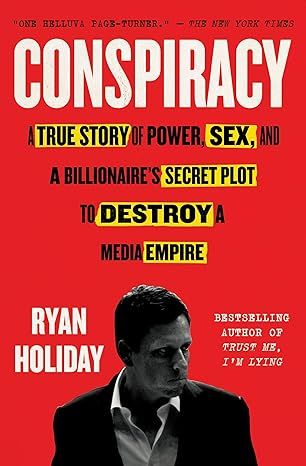
Conspiracy: A True Story of Power, Sex, and a Billionaire's Secret Plot to Destroy a Media Empire
4.3
-
1,965
$5.99
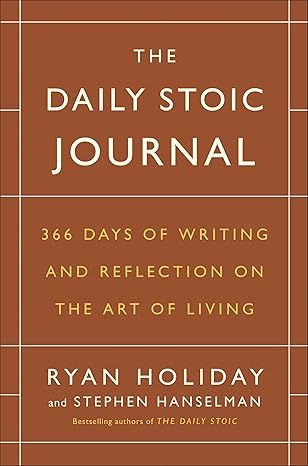
The Daily Stoic Journal: 366 Days of Writing and Reflection on the Art of Living
4.7
-
2,537
$15.99

Stillness is the Key: An Ancient Strategy for Modern Life
4.7
-
9,966
$8.99
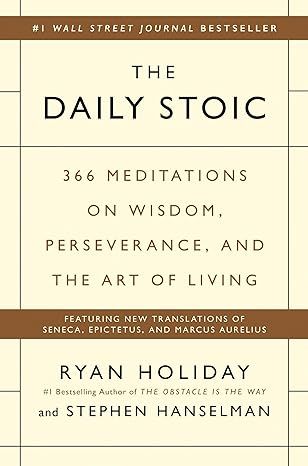
The Daily Stoic: 366 Meditations on Wisdom, Perseverance, and the Art of Living
4.8
-
32,641
$13.00
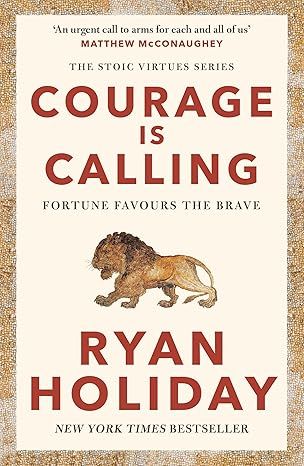
Courage Is Calling
4.6
-
4,763
$13.35
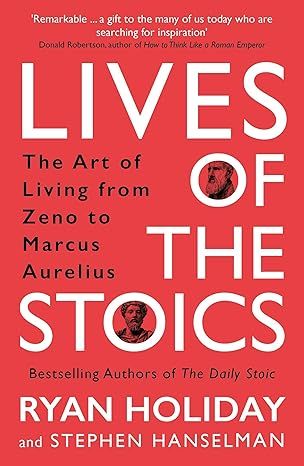
Lives of the Stoics: The Art of Living from Zeno to Marcus Aurelius
4.7
-
2,858
$8.99
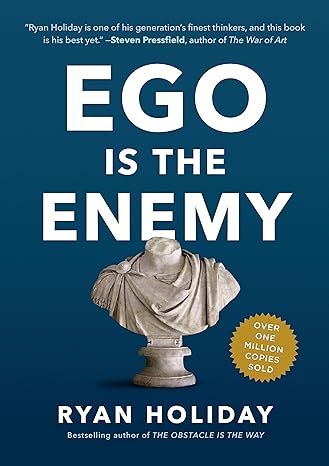
Ego is the Enemy: The Fight to Master Our Greatest Opponent
4.6
-
20,573
$11.99
Best Sellers
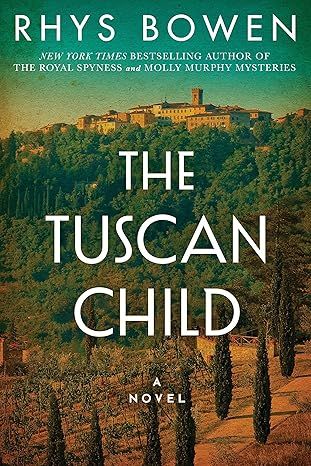
The Tuscan Child
4.2
-
100,022
$8.39
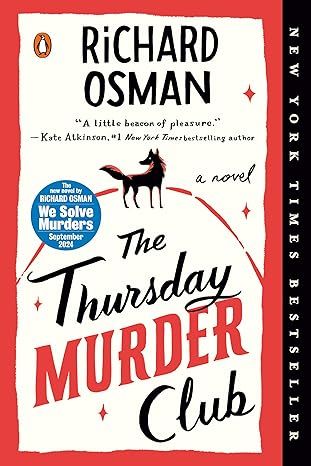
The Thursday Murder Club: A Novel (A Thursday Murder Club Mystery)
4.3
-
155,575
$6.33
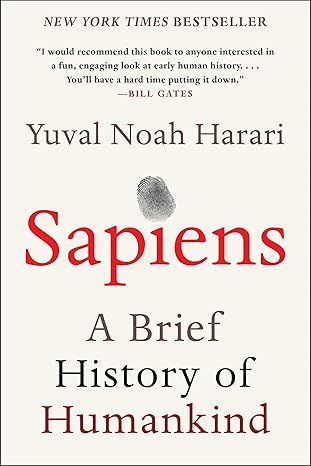
Sapiens: A Brief History of Humankind
4.6
-
140,302
$13.49
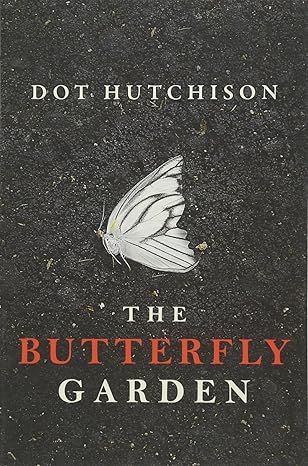
The Butterfly Garden (The Collector, 1)
4.3
-
88,556
$9.59
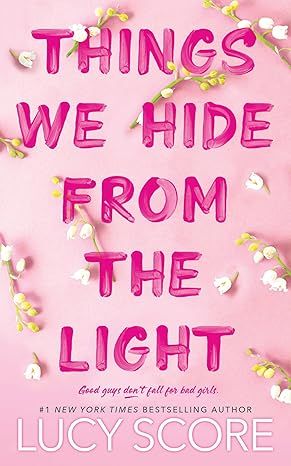
Things We Hide from the Light (Knockemout Series, 2)
4.4
-
94,890
$11.66
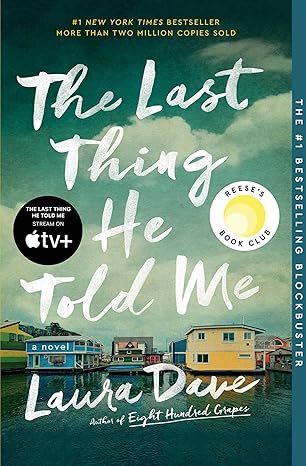
The Last Thing He Told Me: A Novel
4.3
-
154,085
$2.99

The Perfect Marriage: A Completely Gripping Psychological Suspense
4.3
-
143,196
$9.47
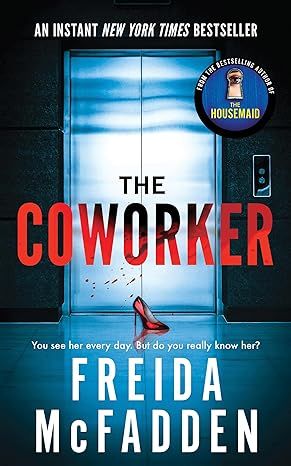
The Coworker
4.1
-
80,003
$13.48

First Lie Wins: A Novel (Random House Large Print)
4.3
-
54,062
$14.99

Mile High (Windy City Series Book 1)
4.4
-
59,745
$16.19

Layla
4.2
-
107,613
$8.99
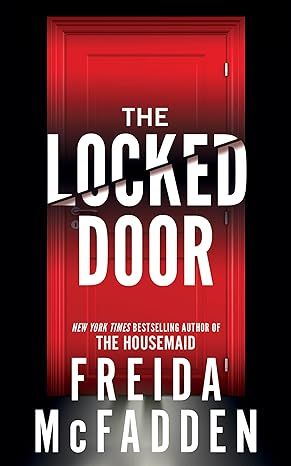
The Locked Door
4.4
-
94,673
$8.53
